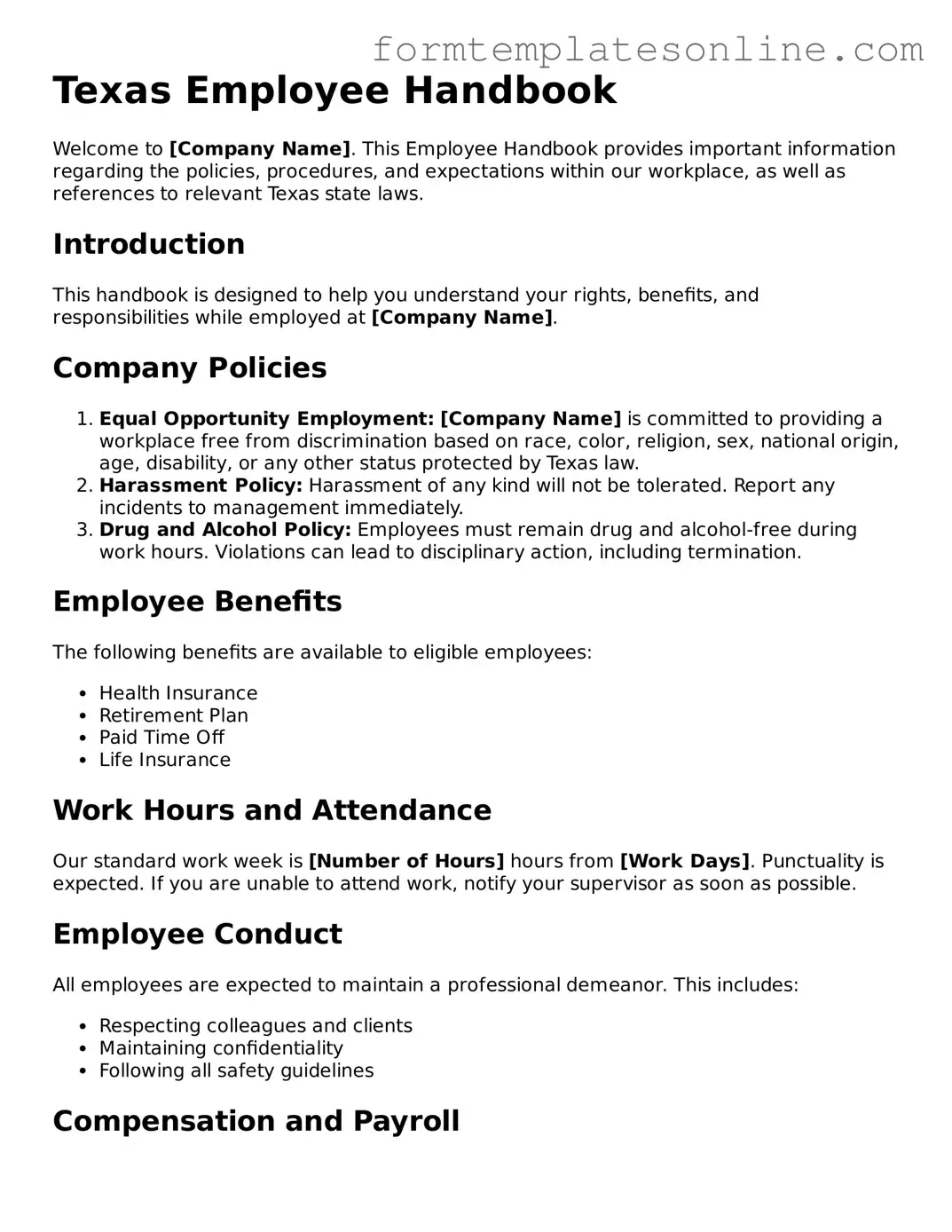Texas Employee Handbook
Welcome to [Company Name]. This Employee Handbook provides important information regarding the policies, procedures, and expectations within our workplace, as well as references to relevant Texas state laws.
Introduction
This handbook is designed to help you understand your rights, benefits, and responsibilities while employed at [Company Name].
Company Policies
- Equal Opportunity Employment: [Company Name] is committed to providing a workplace free from discrimination based on race, color, religion, sex, national origin, age, disability, or any other status protected by Texas law.
- Harassment Policy: Harassment of any kind will not be tolerated. Report any incidents to management immediately.
- Drug and Alcohol Policy: Employees must remain drug and alcohol-free during work hours. Violations can lead to disciplinary action, including termination.
Employee Benefits
The following benefits are available to eligible employees:
- Health Insurance
- Retirement Plan
- Paid Time Off
- Life Insurance
Work Hours and Attendance
Our standard work week is [Number of Hours] hours from [Work Days]. Punctuality is expected. If you are unable to attend work, notify your supervisor as soon as possible.
Employee Conduct
All employees are expected to maintain a professional demeanor. This includes:
- Respecting colleagues and clients
- Maintaining confidentiality
- Following all safety guidelines
Compensation and Payroll
Payroll is processed on a [Payroll Schedule] basis. Each employee will receive their paycheck on [Paycheck Date].
Termination Policy
[Company Name] reserves the right to terminate employment for reasons including but not limited to:
- Poor performance
- Policy violations
- Excessive absenteeism
Conclusion
This handbook is a guide. It is not a contract. For specific questions about policies or your employment, please contact [Contact Information].
Welcome to [Company Name]. We look forward to a productive and rewarding relationship!
